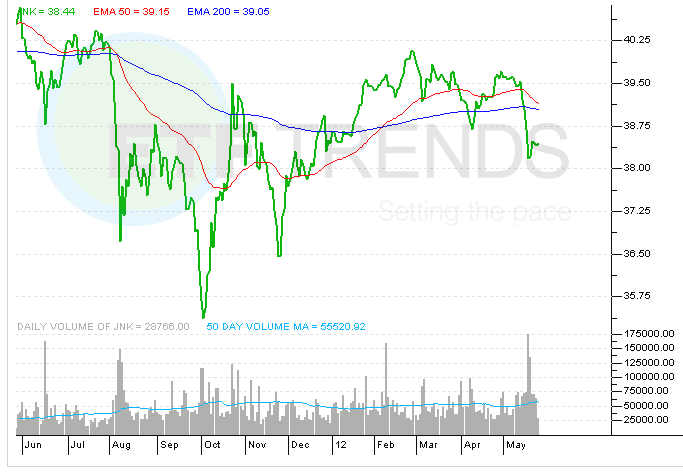How to buy highyield ETFs
Post on: 8 Май, 2015 No Comment

Article utilities
Most exchange-traded funds in Australia are straightforward. They provide exposure to a market index, a sector, or perhaps a commodity but theyre all passive assets that just track a market.
Theres no judgment involved, just a simple replication of the gains in that market.
Last year, things started to change as high-yield ETFs were introduced into the mix. These invest in a different pool to what has gone before.
The simplest way to explain what they are is to look at the products that have come out that have these characteristics.
The trendsetter
The first was from Russell Investments last May: the Russell High Dividend Australian Shares ETF. Instead of being based on an index like the S&P/ASX200, which is the usual model in Australian ETFs, it instead tracks a customised index devised by Russell an index of blue-chip companies expected to pay above-average dividends.
The crucial difference between this and previous ETFs is the word expected. Expected by whom? Expectation is a judgment. Previous ETFs have involved no judgment, just a mirroring of an index.
Russell creates its index through a fairly formulaic method picking top companies with a history of paying dividends, dividend growth, and consistent earnings but nevertheless its not quite a purely passive product.
Applying a filter
Late last year, State Street entered the same territory with its SPDR MSCI Australia Select High Dividend Yield Fund.
In this case MSCI, the global index provider, had built the index for it, once again to filter high dividend yield companies likely to be able to keep up those dividends.
Next into the mix was a product from iShares, with its S&P/ASX High Dividend product.
This one is subtly different again, because no single stock can account for more than 4 per cent of exposure. No individual sector can account for more than 20 per cent of exposure.
That means youre going to get a diversified cross-section of companies delivering a high dividend stream, without being heavily focused on one sector financials, says Tom Keenan at iShares.
A different approach
Still another approach is to use a sector ETF which focuses on a high-yielding area. Australian Index Investments, for example, points out that over the past 12 months its financials ETF and its financials ex-A-REIT ETF have both delivered a higher yield than any of the three ETFs mentioned above. From the investor perspective, theres no particular need for alarm about this general divergence in approach.
The products charge a low fee much like any other ETF. And they serve particular investors, especially retirees, who want exposure to shares but also need stable income.
For many years, investors and their advisers have sought to build yield portfolios, stuffing them with Telstra and Commonwealth Bank of Australia shares as much for the track record of high yield as for any particular belief in the company, beyond its ability to keep paying nice big dividends.
High-yield techniques
These ETFs simply turn those high-yield techniques into a fund that can be traded like a stock.
There are going to be more ofthese products that put a little bitof a twist on the simple ETF theme.
Vanguard Investments launched one recently, and when Russell launched its second Australian ETF in March, it again did so with a rules-based approach, as this method is called in the industry.
The Russell Australian Value ETF gives exposure to another Russell-built index, the Russell Australia High Value Index.
This starts out with Russells Australia Large Cap Index and then assigns all the stocks in the index a value score and a growth score, based on price-to-earnings ratios and medium-term earnings growth.
Those that come out as value-styled which for active managers usually means stocks that are trading below their fair value but likely to catch up are included and weighted in the index.
Russell cites research saying passive value-based strategies have typically delivered between 1.5 per cent and 3 per cent over the broader market in Australia.
Russell built this partly with institutional investors in mind, but it also suits mum-and-dad investors who want additional yield without paying for an active manager.
Popularity pays off
All these products are proving popular by the time Russell launched its second fund, it had already attracted $140 million into the first one in less than a year.
Also, all these funds are backed by all the underlying stocks and are transparent, with the full portfolio available on providers websites.
They do not fit into the category of synthetic ETFs that are beginning to cause concern elsewhere in the world.
Nevertheless, in containing a twist on the usual passive equity approach, they do run the risk of underperforming the market rather than outpacing it.
Thats fine as long as investors understand its a possibility.
In a sense theyre a bit like an enhanced index fund not straying too far from a diversified index but with an attempt to give it a bit of juice in the returns.














